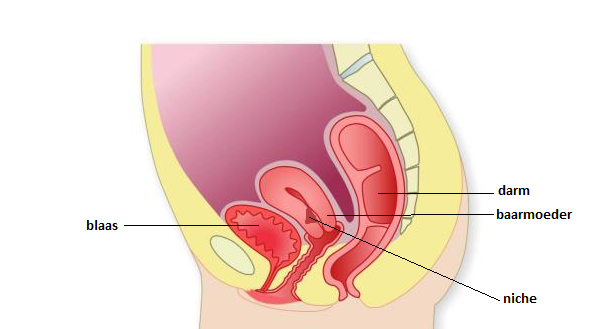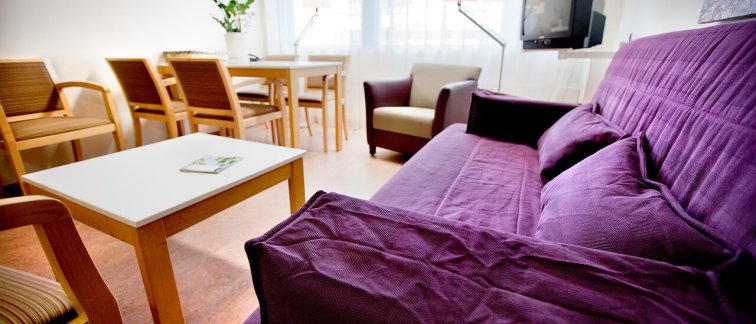Getting pregnant with a niche, what do you need to know? This brochure will tell you more about what a niche is and whether it can play a role in becoming pregnant or during pregnancy. In addition, you will find information on the various treatment options if you wish to become pregnant.
What is a niche?
Women who have had a cesarean section may have an abnormality in the uterus. This abnormality is located at the site of the scar from the old C-section. The abnormality is usually a recess in the uterus, also called a 'niche'. Figure 1 shows a schematic representation. A niche can be made visible utilizing a water echo or a gel contrast echo. A niche occurs in about 60% of women after a cesarean section. About 20% of the women with a niche have complaints, such as loss of blood between periods, pain at the bottom of the abdomen, or problems getting pregnant.
Niche and a desire to have children
There are indications that a Cesarean section may cause problems in conceiving (fertility). A possible explanation for this may be the niche. A large niche may contain a layer of fluid. This fluid layer can make it more difficult for sperm to penetrate and for fertilized eggs to implant. In the Uterine Repair Center of Amsterdam UMC, we do a lot of research on the effect of a niche on fertility and the course of pregnancies in women with a niche.
Treatment of a niche if you want to have children
Internationally, much research has been done on niche treatment in women with symptoms. Current research focuses on whether this treatment also affects fertility problems.
There are two different surgeries for treating a niche when you want to have children:
- Hysteroscopic niche resection: a thin viewing tube is inserted into the uterus through the vagina. The blood vessels in the niche can then be burned, and the niche is made slightly flatter. This makes it easier for the blood to flow out. As a result, the niche is actually made slightly larger.
- Laparoscopic niche resection: the niche is removed from the uterus using keyhole surgery via the abdominal cavity. The uterus is then repaired with sutures. The uterus must then recover for 6 months before a new pregnancy may occur.
Not all treatments are useful or possible for all niches. In a relatively shallow niche with a thick muscle layer, a laparoscopic niche resection is not very useful because we often cannot make it any better than it is. No hysteroscopic resection can be performed in large niches with a thin muscle layer because the risk of perforation (hole) is high. Moreover, you then do nothing about the weak spot in the uterus.
Laparoscopic niche resection currently only takes place in research settings in the LAPRESS or NOPRESS study.
After both treatments, a planned cesarean section is recommended as the way to deliver.
Pregnant with a niche
It is possible to become pregnant with a niche or after treatment for a niche. In such cases, we recommend an ultrasound scan at the hospital at around 6 weeks of pregnancy to determine the location of the pregnancy. In addition, we will be happy to perform an ultrasound at 12, 20, and 30 weeks of pregnancy to assess the niche, monitor the progress of the muscle tissue during pregnancy, and possibly advise on the manner and timing of delivery.
Large niche and no desire to have children
For women with a large niche and symptoms, the SYMPRESS study will start soon because we also want to offer these women the option of laparoscopic niche resection in a research setting.
More information:
For more information about the Uterine Repair Center, please visit: Amsterdam UMC Location AMC - Uterine Repair Center
If you have a niche or are having problems conceiving and have had a cesarean section in the past, you can make an appointment for our special niche consultation hour. Please ask your family doctor or gynecologist for a referral.
If there are any questions, please contact: lapressstudie@amsterdamumc.nl

- intestine
- uterus
- niche
bladder
Figure 1- schematic

